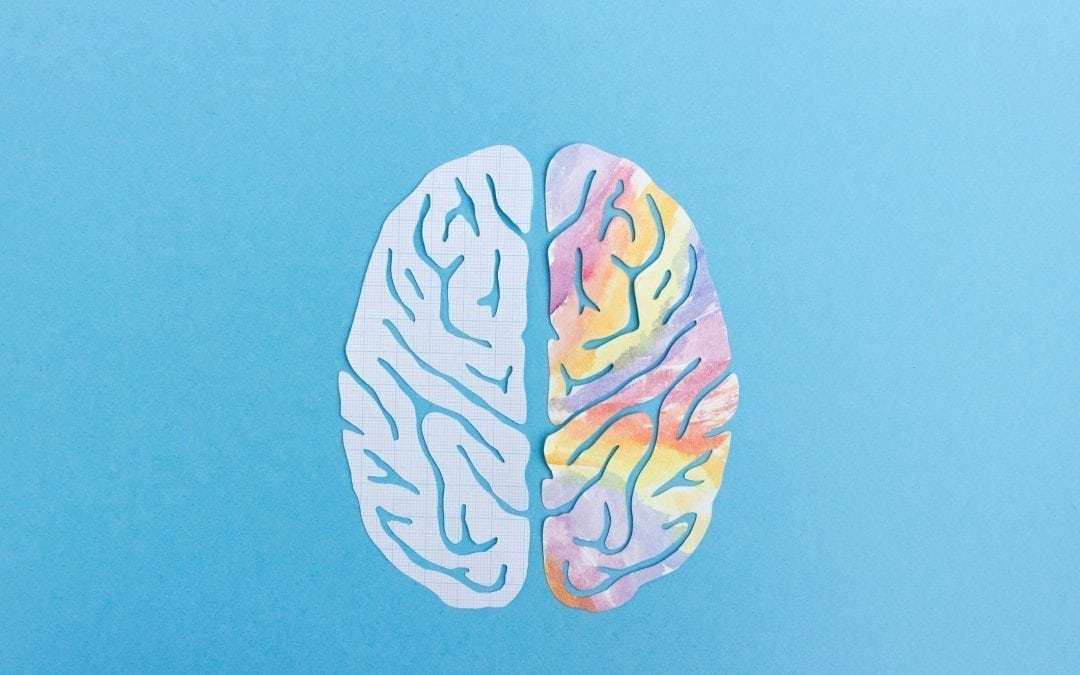One of the most important steps you can take to strengthen your mental game is to learn the effective use of both your Practical Thinking (Left Brain) and Imaginative Thinking (Right Brain) for competition.
Champions use their creativity
Skilled golfers, like skilled musicians have a vast knowledge of the techniques of their craft. What makes an individual great in any of these professions is the ability to process and apply this knowledge in a creative and intuitive way. We refer to these two processes as (1) practical, left brain or mechanical thinking and (2) imaginative, right brain or visual thinking. Champion golfers recognize these two distinct processes and strive to use both effectively during competition. They use practical abilities to assimilate only the data they need to commit to club, target, and types of shots. They resist judging themselves, over analyzing their games, second guessing their decisions, or hitting their shots with mechanical thoughts (left brain). They then are more free to use their imaginative and creative skills to unleash their natural athletic abilities and trained skills to hit their shots and putts (right brain).
Mental traps that inhibit imagination
Professional golfers face many challenges in their effort to maintain a creative approach to competitive play. Here are a couple of examples of common mental “traps” that pull even the most imaginative golfers into competing with the practical (left) side of the brain.
The Search for the Perfect Swing
There is inevitable temptation for a golfer to adjust, correct, or modify his swing. This is partially because of the near impossibility of perfecting and maintaining a flawless swing, and partially because of the endless information made available to players for that purpose. If he/she is playing poorly, there is justification for the golfer to change his techniques to improve his scores. If he/she is playing well, there is usually someone, if not himself/herself, to remind how much more successful he/she would be with improved mechanics. As a general rule, it would benefit you to fully assess your mental game-including your use of imaginative thinking- to determine if it may be inhibiting your performance before beginning work on changing your physical game.
Expectations
While a champion golfer has learned to use types of circumstances as motivation to emphasize focus, routine, and creative play, most golfers will unknowingly allow these situations to pull them into excessive, practical thinking. The result is that they are more impatient with bad shots or bad breaks, are more self-critical, and are too aware of what others are expecting. Visualization and feel are virtually unused.
Getting to know both sides of your brain
This is an important step toward liberating your creative potential in golf. Both are important and both must be used appropriately to enhance performance. For most people, the left side of the brain is responsible for language, math, logic, analysis, planning, and detail. In golf that translates into goal setting, judgement and analysis of performance, self-criticism, compliments, outcome, routines, etc. The right side of the brain is responsible for intuition, visualization, creativity, and creating attitudes for competition. Although recent research suggests that the division of left and right brain functions may not be as clear cut as originally thought, the distinction is still significant and useful for competitive golf.
Sports require both left and right brain thought. Left brain is used for learning skills through detailed instruction, setting goals, developing strategies, and correcting flaws in technique. Right brain allows for incorporating skills through role modeling, visualization and imagery as well as the intuitive use of your natural athletic abilities in practice and competition. When an athlete is learning skills, more practical thinking should be used. When an athlete is performing skills, more imaginative thinking should be used.
If you are unsure of your tendencies, check your practical vs. imaginative score on your GolfPsych Profile: scores of 1 to 3 indicate strong practical or left brain tendencies; scores of 7 to 10 indicate strong imaginative or right brain tendencies; scores of 4 to 6 indicate tendencies toward both.
Common Misuses
You manage a course poorly…You are hitting the ball yet several times during a round you find you have either used the wrong club or you have found yourself in the worst position for shots. Too Little Practical Thought.
You are not visualizing the shot or putt before execution…Your mental routine is more involved with alignment and technique. Saying, “I really need to birdie this par 5 to make up for 3 putting the par 3.”, than visualizing this shot which would free up your natural athletic ability. Too Much Practical Thought.
Suggestions for imaginative thinkers
If you are not re-building a swing, most of your best practice will come from play. When you do practice, you may be more tempted to “just hit balls” to fill time or relieve guilt. You may also be inclined to hit the shots you are hitting well rather than set up drills to work on your weaknesses. Try to better organize your practice with the idea that quality is better than quantity. Do not hit a lot of balls in practice, but have a specific purpose for the balls you do hit—to strengthen a weakness. When you play your practice rounds, discipline yourself to use this time to pre-plan strategy
for managing the course. You could be more disciplined in organizing your goals for competitive golf. Take time to set reachable mental, physical and overall goals at the beginning of your year to give yourself direction and purpose. Review your goals a few times a year to assess progress and restructure goals as needed. You need not be extremely goal conscious, but do have a plan.
Take only mental goals into competition. Develop a strong mental routine that ensures you take the time and thought necessary to do all your calculations. The calculations should allow you to fully commit to a club, target, and type of shot before you visualize your shot and feel your swing. If adding and subtracting yardages, estimating wind, judging club lengths, and managing a course are difficult for you,
choose a caddy that is particularly adept at these things (a more practical thinker). Rely on the practical caddy but stay involved in the process and make all final decisions yours so that you can fully commit to all choices made.
Techniques for managing practical and imaginative thought during your round
A consistent mental routine to accompany your physical routine is vital at all times. It is especially important during the two situations that are the most difficult for keeping left brain thoughts out of your shotmaking: (1) when your physical game is especially weak, (2) or when you find yourself in position to win. The routine will compartmentalize your practical and imaginative thoughts as it helps you narrow and simplify your focus for shot and putt making.
Step 1: Practical Do all your left brain calculations in one full step so that you can fully commit to your club, your target, and type of shot you want to hit before doing anything else. For putts, you fully commit to a line and a speed. Be certain of committing before gripping your club or putter.
Step 2: Imaginative Stand behind the ball until you can clearly visualize the exact shot or line to which you have committed. If visualization is difficult, take a deep breath and relax your arms at your side and try again.
Step 3: Imaginative Feel the exact swing to which you have committed. Various ways that players feel their swings include: imagery with one swing thought; waggle and imagery with one swing thought; partial swing and imagery with one swing thought; or full swing and one swing thought. Choose a method and a swing thought to which you can commit for the day while warming up for your round. Make your swing thought feel oriented rather than mechanical.
You can interchange steps two and three to accommodate your physical routine. If you are visualizing or feeling your shot and the practical thoughts—such as second guessing your club, target or mechanic—interfere, back off and start the routine again. If your left brain still interferes, consider talking with a sport psychologist to sort out any conditioned responses that may be tripping your left brain thought
The left and right sides of your brain are responsible for different types of thoughts. During your competitive round you must learn to use the practical (left brain) or imaginative (right brain) types of thoughts at the appropriate times to optimize your play. You can have inappropriate thoughts from either side at the wrong times in your round. Learn to recognize each type of thought. Practice using the appropriate thoughts with your routines.


